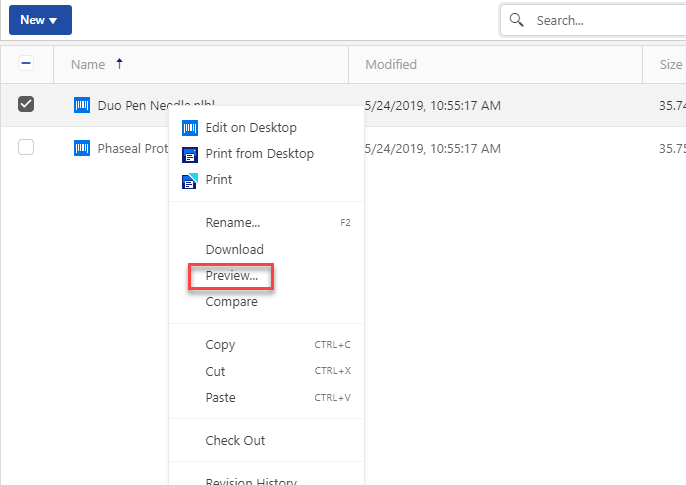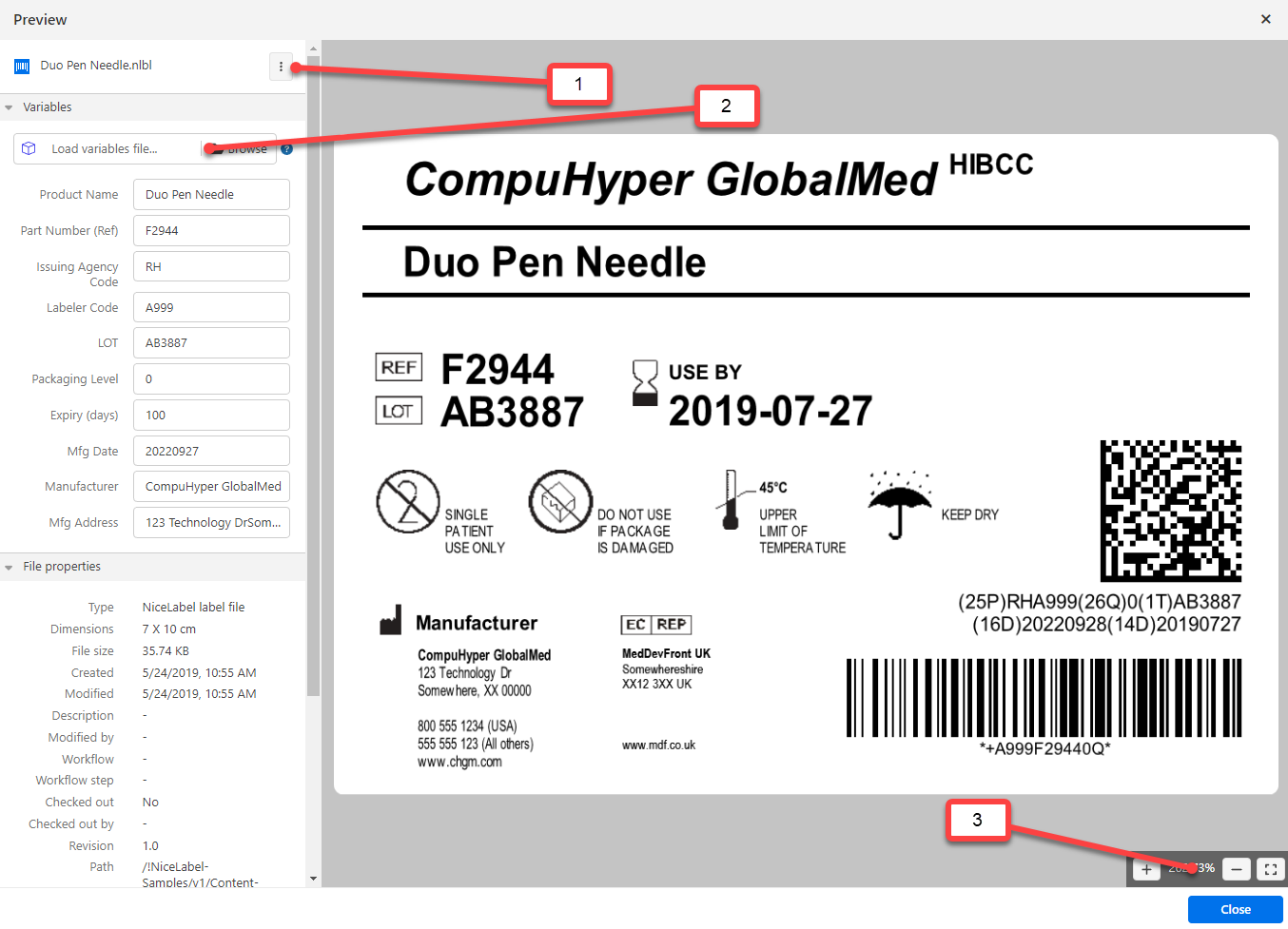Previewing Label Files
You can preview your label files directly in the
To see your label preview:
Right-click your label file and click
Preview in the context menu.Note
You can't preview solutions (.nsln files).

The preview opens in an embedded window.

1. By clicking this icon you can edit, print, or download your label file.
2. You can browse for the sample text file containing variable data (name:value pairs).
3. Label preview zoom options with a full-screen button.
Note
If you enter the
Initial value data in your label variable properties,Variables values fields showsInitial value content.
Note
When you select a double-sided label, the preview shows only the front side. To see both sides, right-click the label file, then click
Control Center can also preview images and PDF files. Right-click the file, and click
If you work with file revisions, you can preview files of any revision from the
Note
When opening your label preview, you can enter the values for variables and see how they appear when printed. You can also use database values.
Note
Control Center generates label previews using the installed printer on your Control Center. If the printer does not exist, Control Center uses a virtual printer instead.
Applying Values From Data Files to Variables
You usually design your label templates with variables that don't have any default value defined. This ensures that no hard-coded values would be used during printing. On the other hand, it makes the label preview and comparison more difficult because you have to provide the values for variables before Control Center generates the label preview. When generating the label preview, you can enter values manually.
You can also provide Control Center with the external data file (a list of variables and their values). Control Center applies the data file for the generating label previews. The data file must provide the
Note
You can let Control Center find the data file based on the rules defined below, or you can click the folder icon next to the label name/preview and override the defaults with your data file.
You can create your variable data file in XML or delimited structure.
You provide your variables within <Variables /> root element in your XML file. Provided variable names with attribute names and variable values with the element value.
<?xml version="1.0" encoding="utf-8"?>
<Variables>
<variable name="customer">Pizzeria Manhattan</variable>
<variable name="country">Belgium</variable>
<variable name="Lot_nr">478887566</variable>
</Variables>Create every
customer=Pizzeria Manhattan country=Belgium Lot_nr=478887566
The name of the data file can be the same as the name of the label, but using the extension .values. This private data file allows you to provide different data file for each label.
If you have a label named label.nlbl, name your data file label.values.
The other option is to use the same generic data file for all labels. In this case, name the data file default.values. The
Note
If both files exist in the same folder, the file label.values will take precedence over the file default.values.
You can store your data file in any location in the Documents storage.
Example
You stored your label pasta.nlbl in the folder /food labels. The path to your label is /food labels/pasta.nlbl.
Control Center searches for your data file in the following order.
The private data file in same folder as the label file.
Example
/food labels/pasta.valuesThe private data file in the subfolder SampleValues.
Example
/food labelsfolder1/SampleValues/pasta.valuesThe generic data file in the same folder as the label file.
Example
/food labels/default.valuesThe generic data file in the subfolder SampleValues.
Example
/food labels/SampleValues/default.values
When Control Center finds first available .values file, the search stops and the contents of the data file is used for the label preview.
Note
Using the SampleValues subfolder is useful when you have a workflow process defined in the label folder, but you do not want the same workflow to govern your data files. In this case, you can store the new version of the data file without going through all workflow steps.